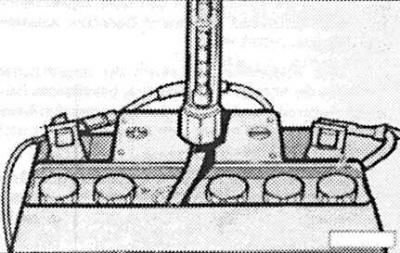Electrolyte Density Check

The density of the electrolyte and the measured voltage give an accurate conclusion about the charging of the battery. To check, you need a pear offered for sale in special stores.
The higher the specific gravity (electrolyte density) electrolyte, the less the float sinks. On the scale, you can determine the specific gravity of the electrolyte in g / ml or in Baumé degrees (Ve). The following values should be received:
Charger | °Be | g/ml |
discharged | 16 | 1,12 |
half discharged | 24 | 1,2 |
well charged | 32 | 1,28 |
Check each battery cell in sequence, all cells must have the same electrolyte density (±0.02 g/ml). Otherwise, the battery is defective
Battery test under load
1. Connect a voltmeter to the battery terminals.
2. Start the engine and measure the voltage.
3. During starting, with a fully charged battery, the voltage should not fall below 8 V (at an electrolyte temperature of about 20°C).
4. If the voltage immediately drops and different electrolyte densities are found in the banks, then the battery is faulty.
5. The overall voltage can also be checked with a tester.
Capacity | Load current, A | Minimum voltage, V |
44 A4 | 200 | 9,2 |
60 A4 | 200 | 9,2 |
61 A4 | 200 | 9,4 |
72 A4 | 300 | 9,4 |
92 A4 | 300 | 9,4 |
Attention! If when measuring (duration 10 sec) voltage drops below the specified value, the battery is either discharged or defective.

Visitor comments